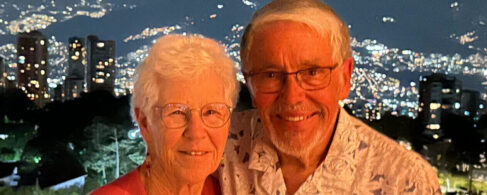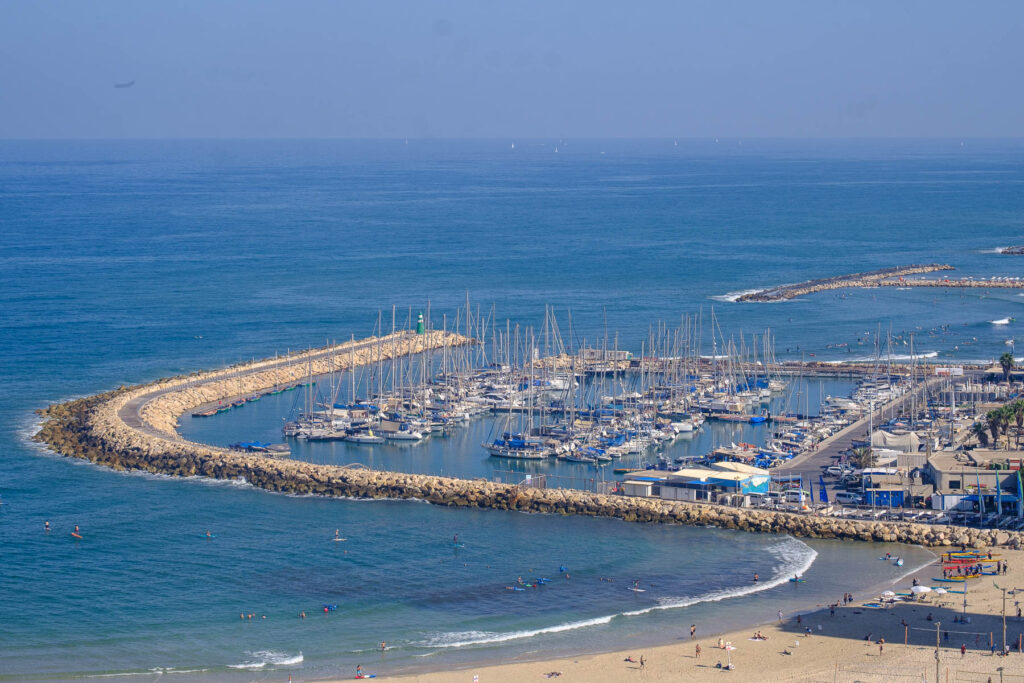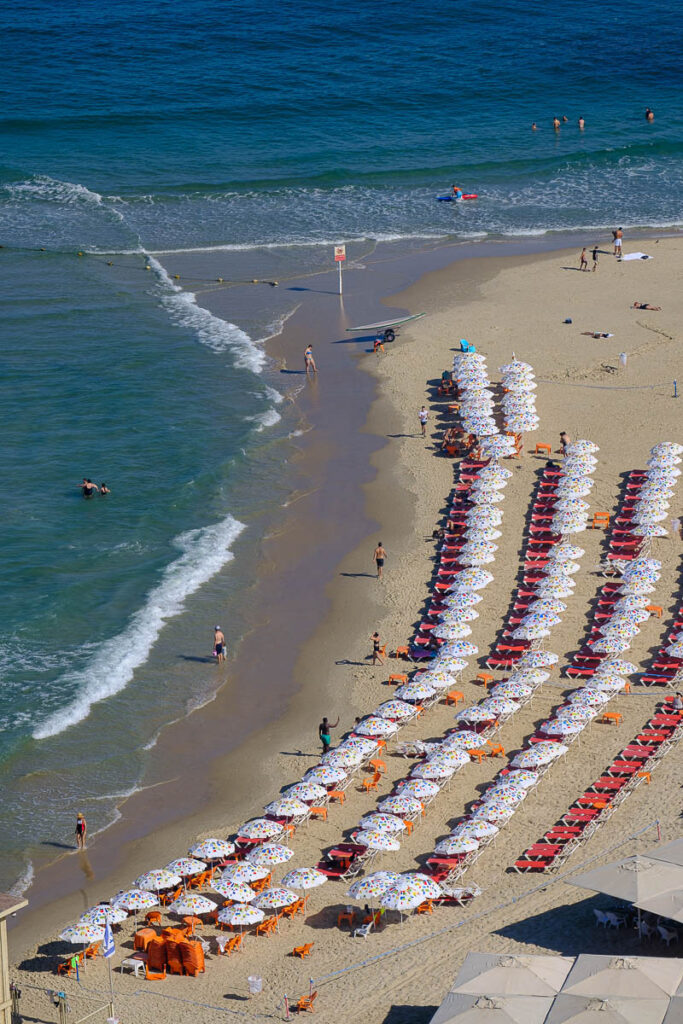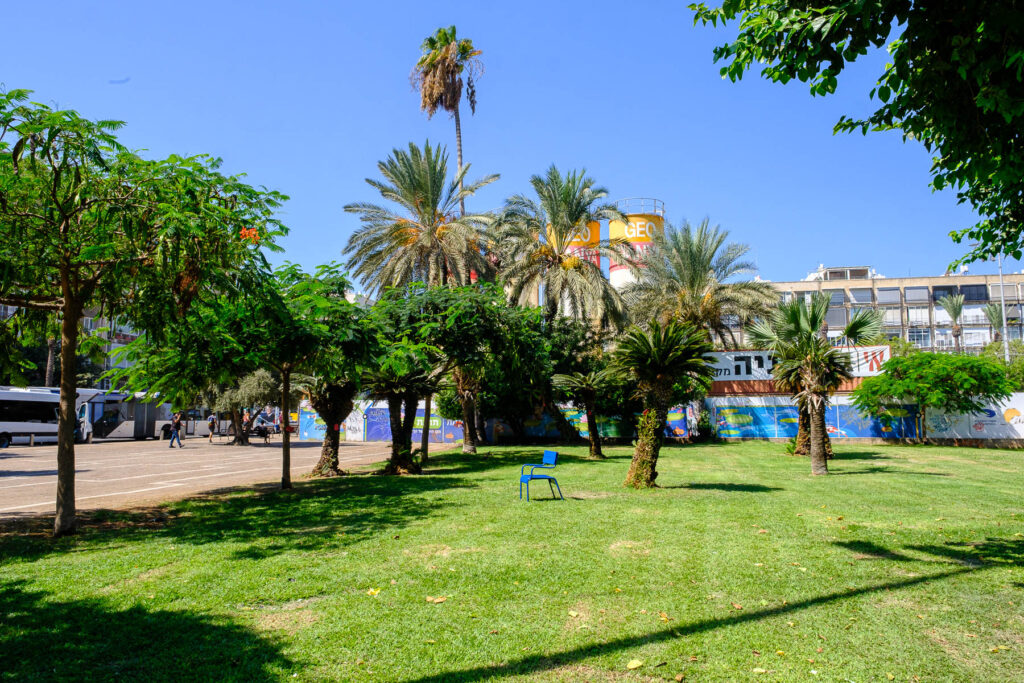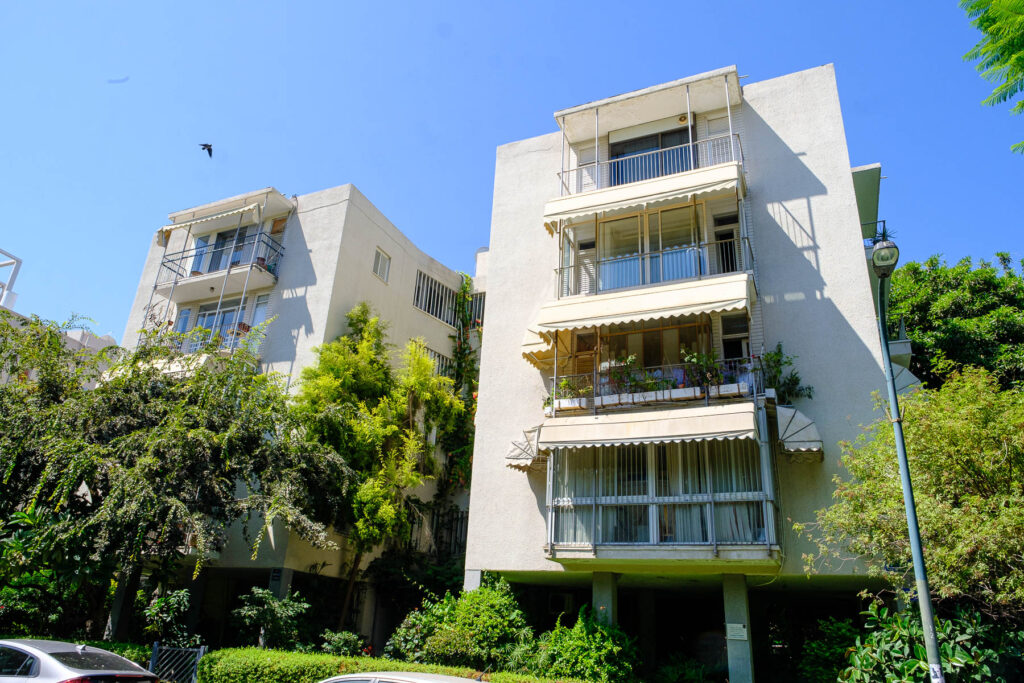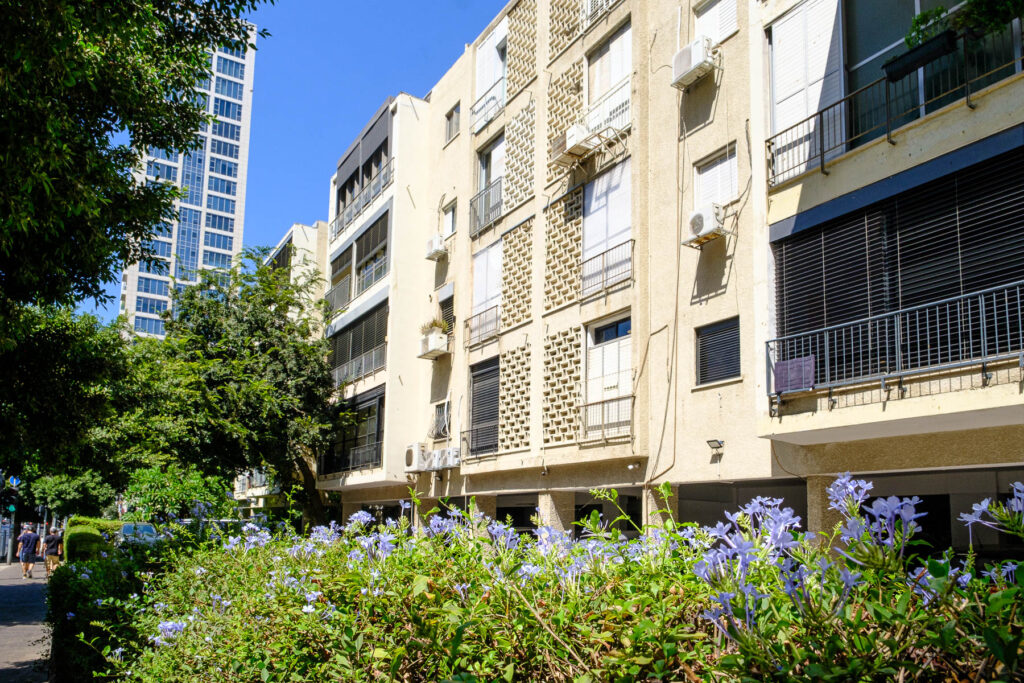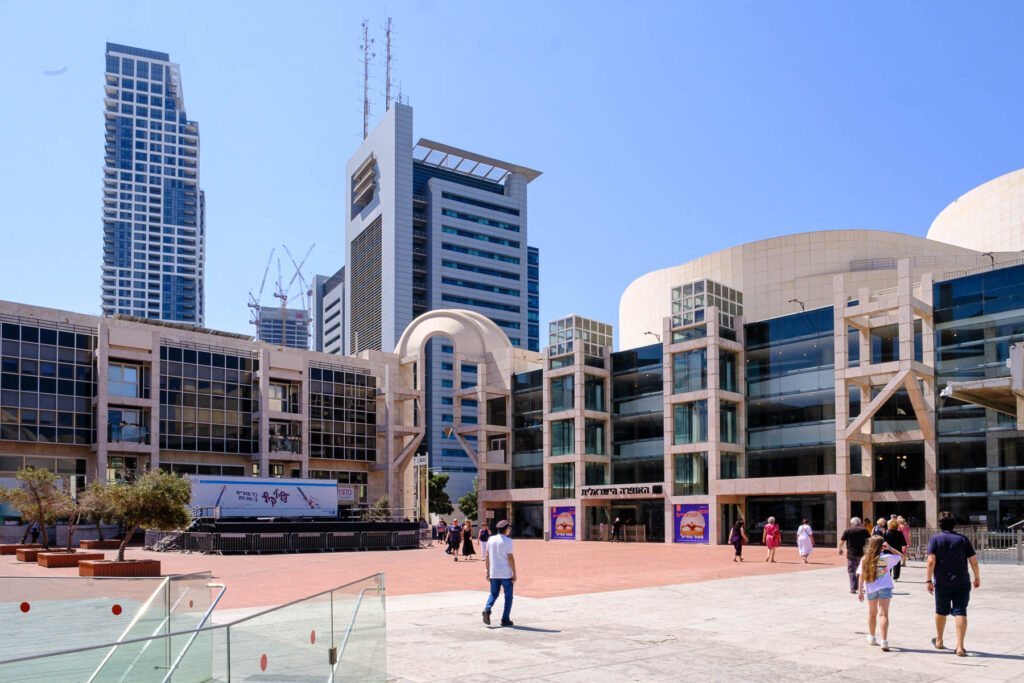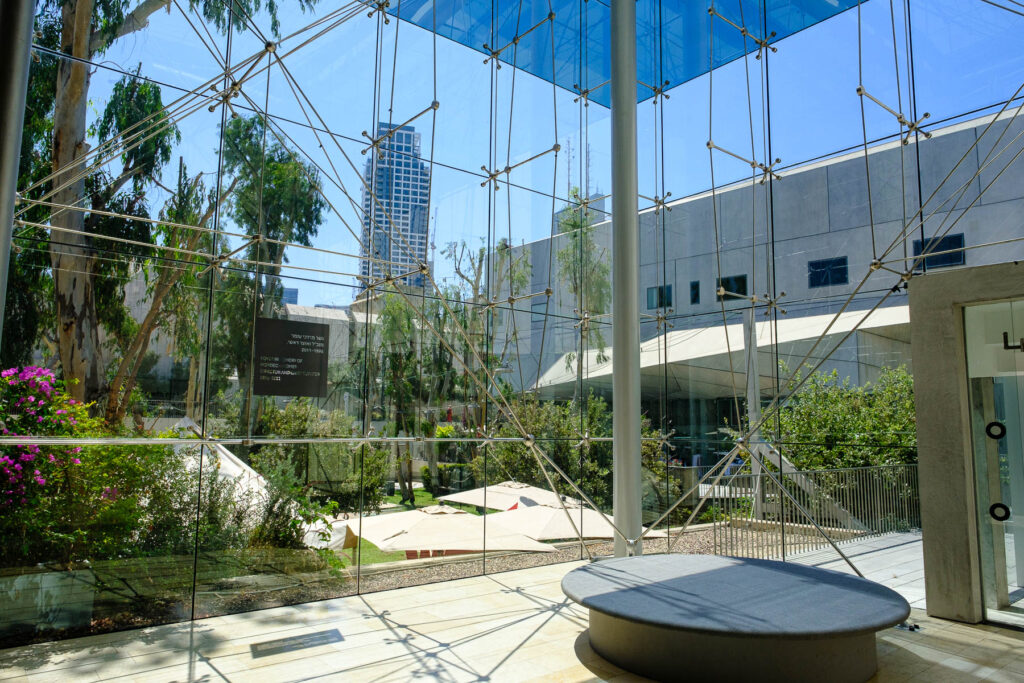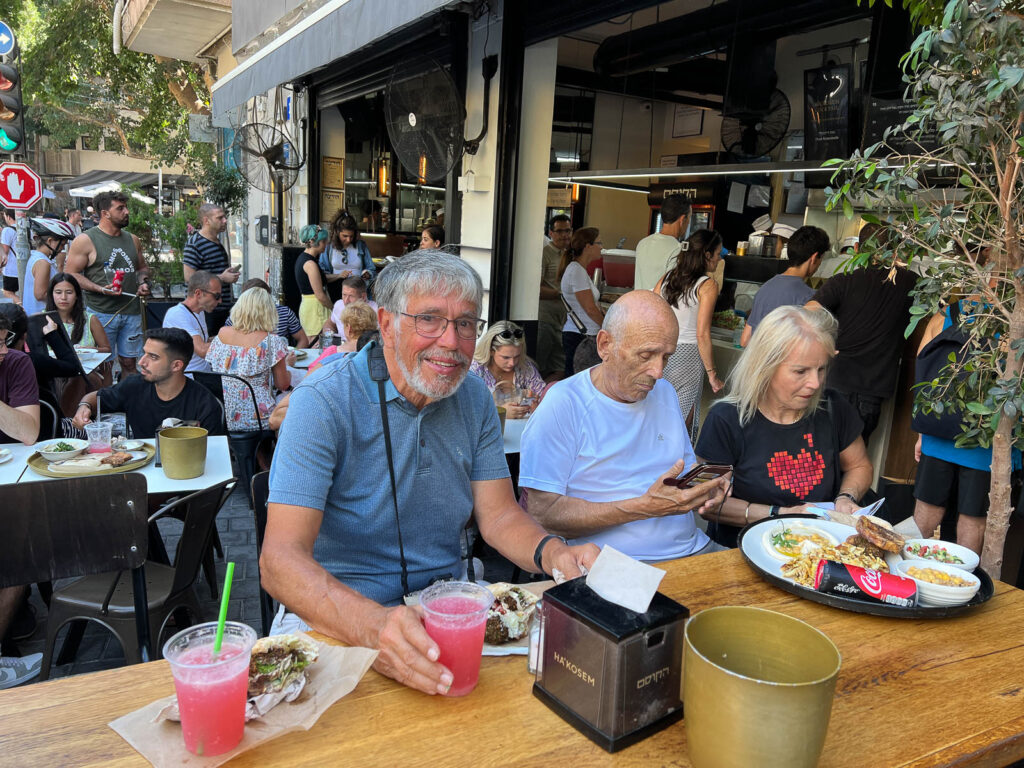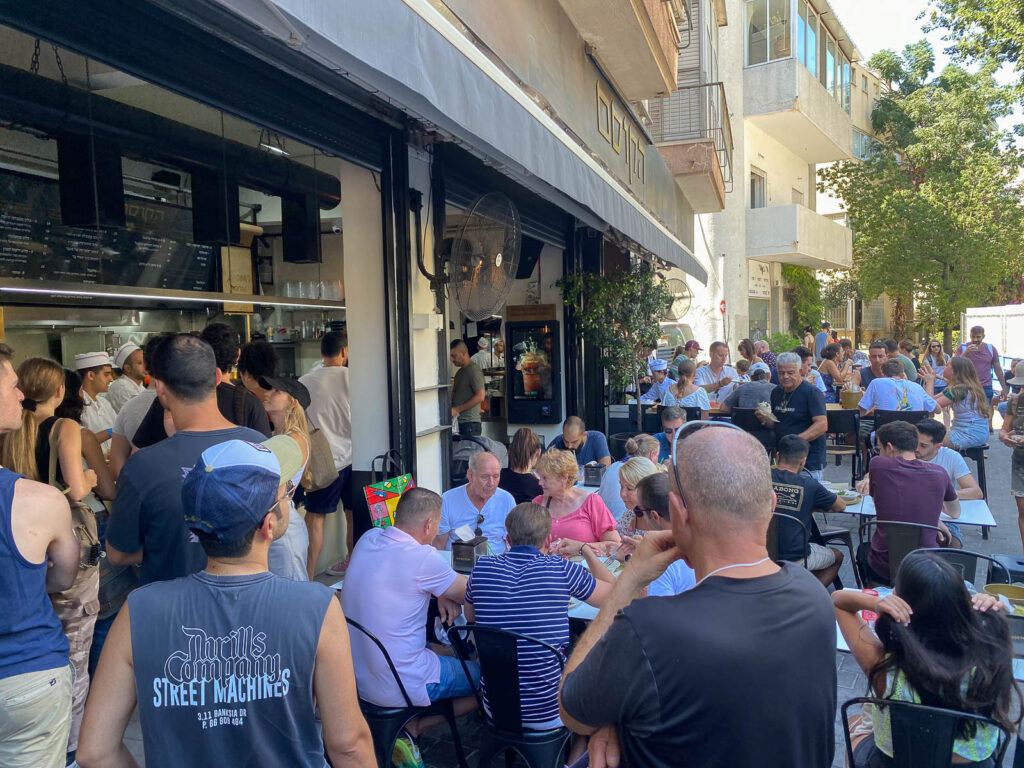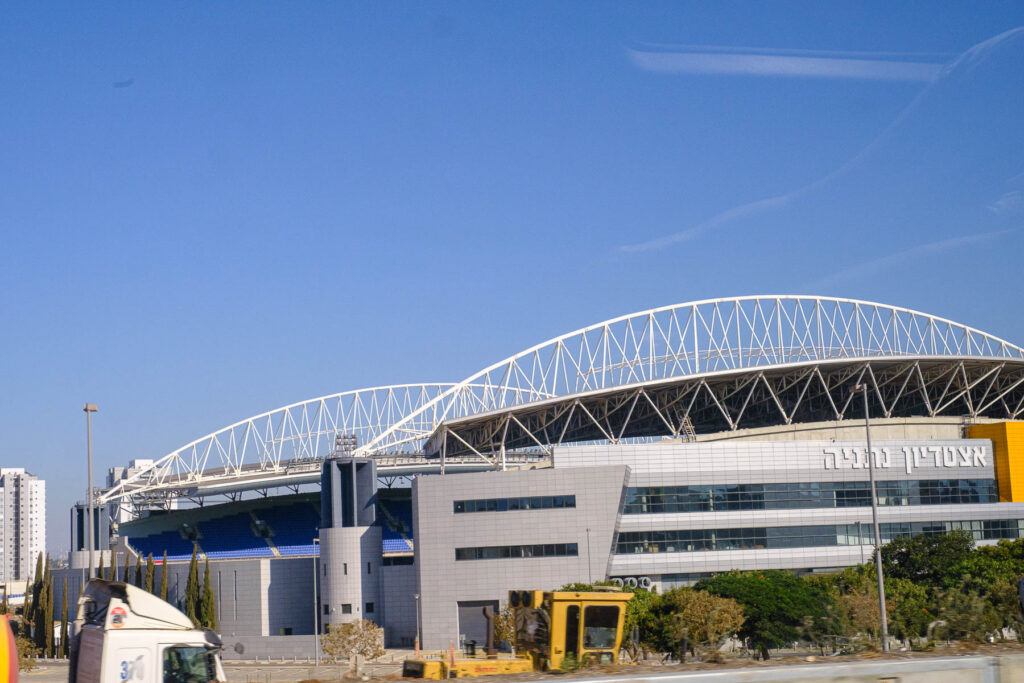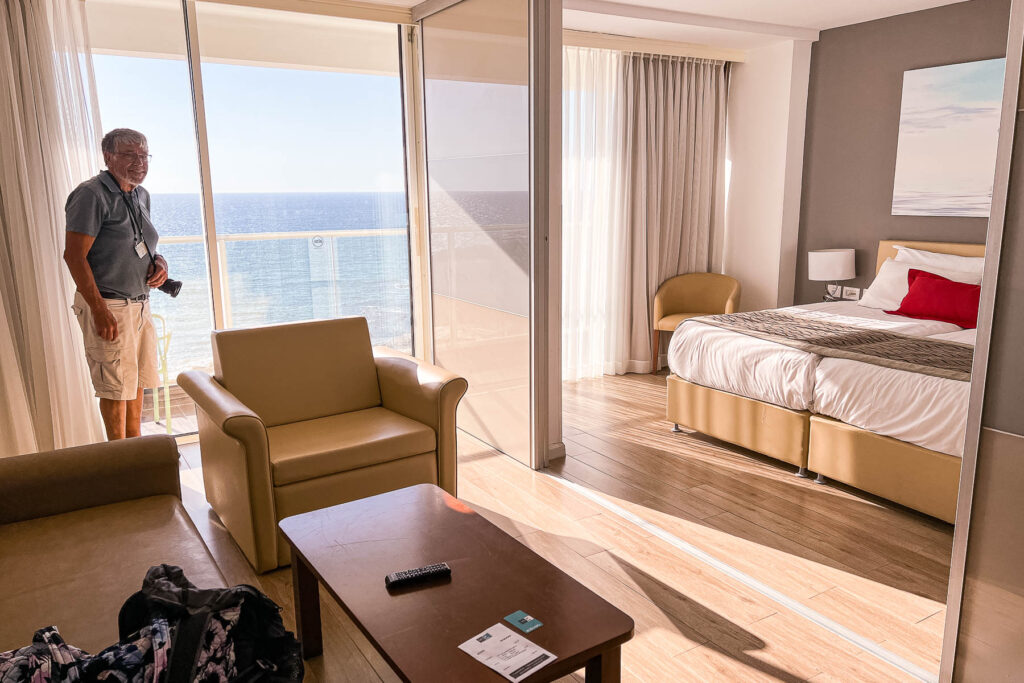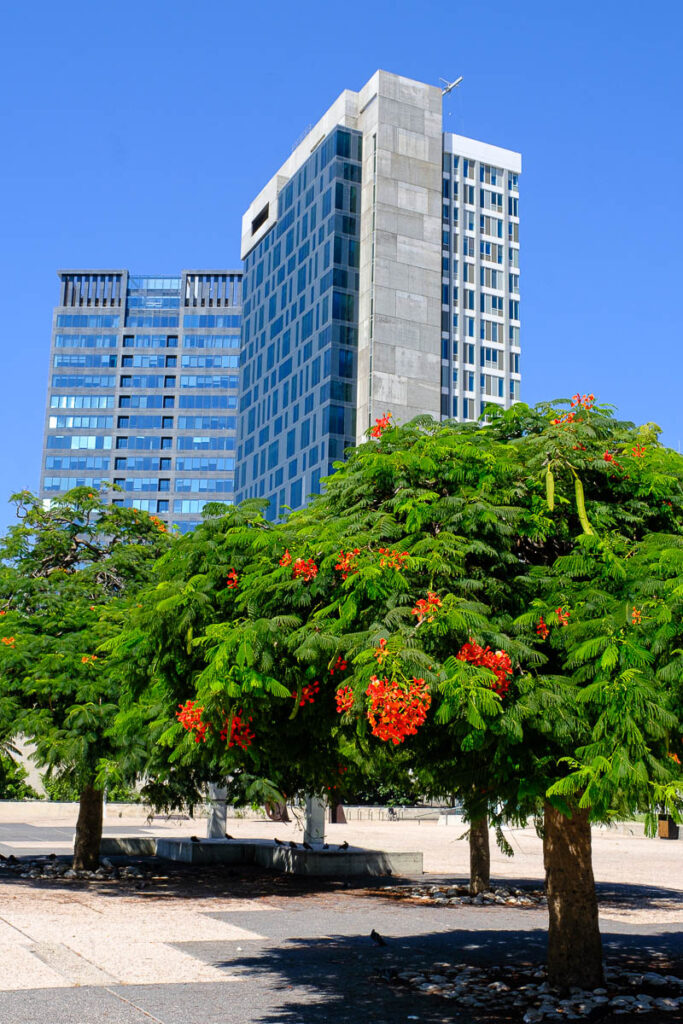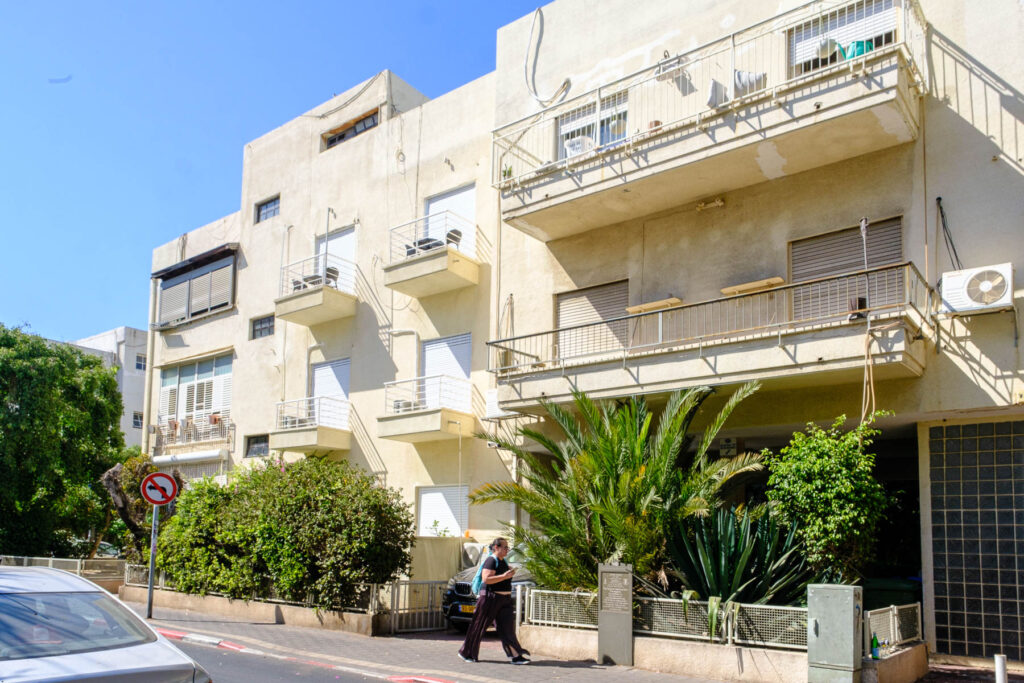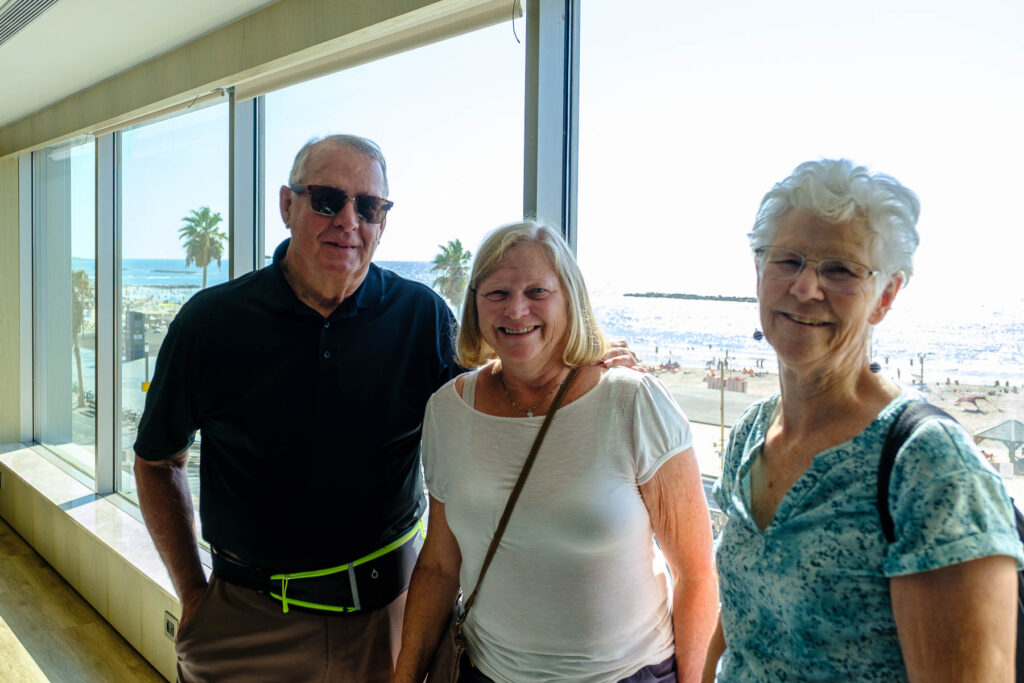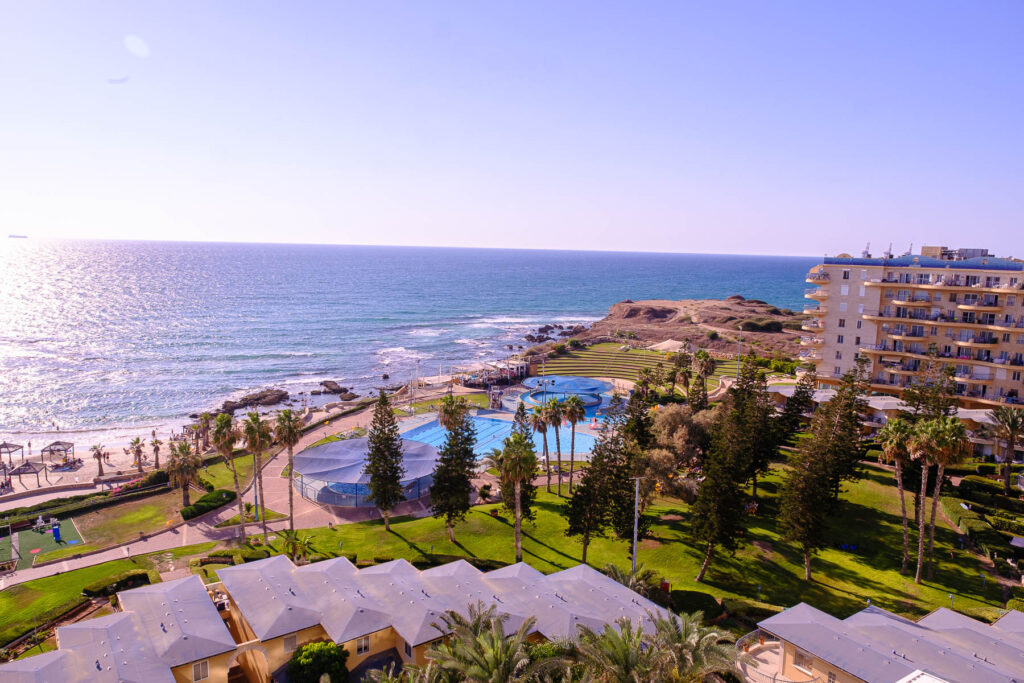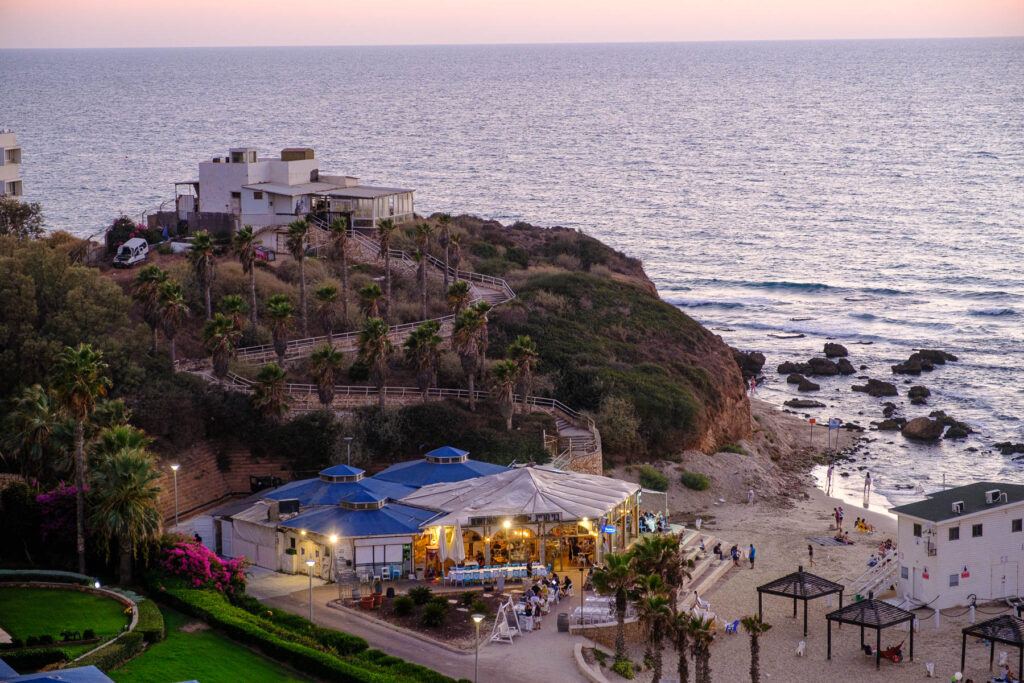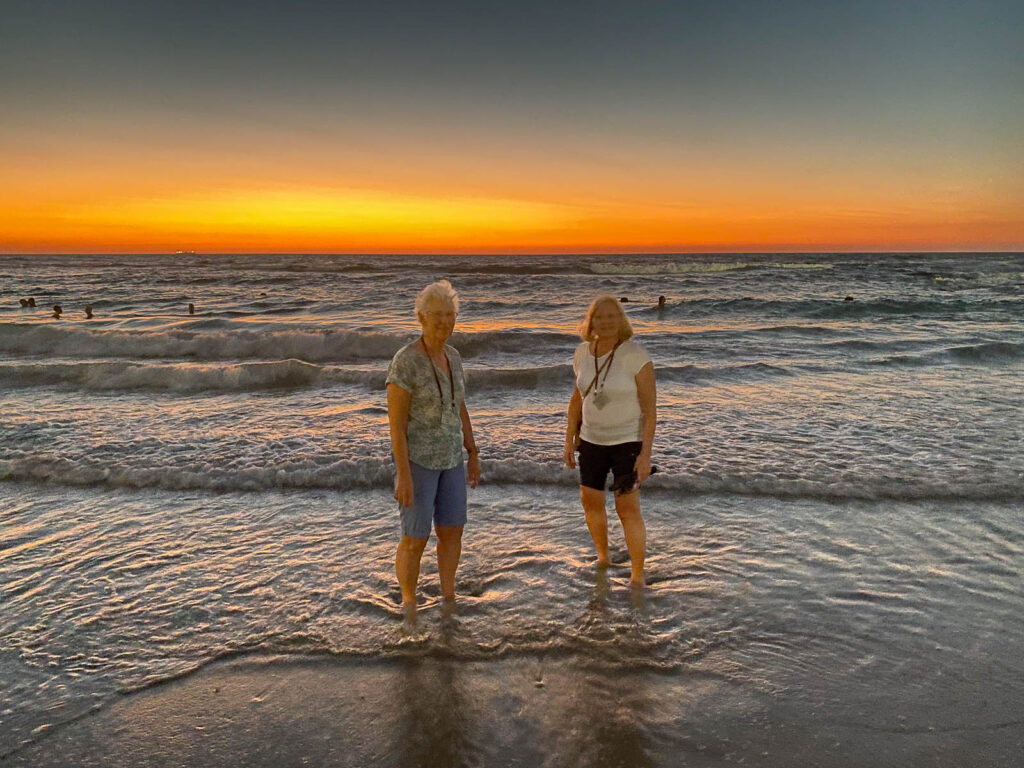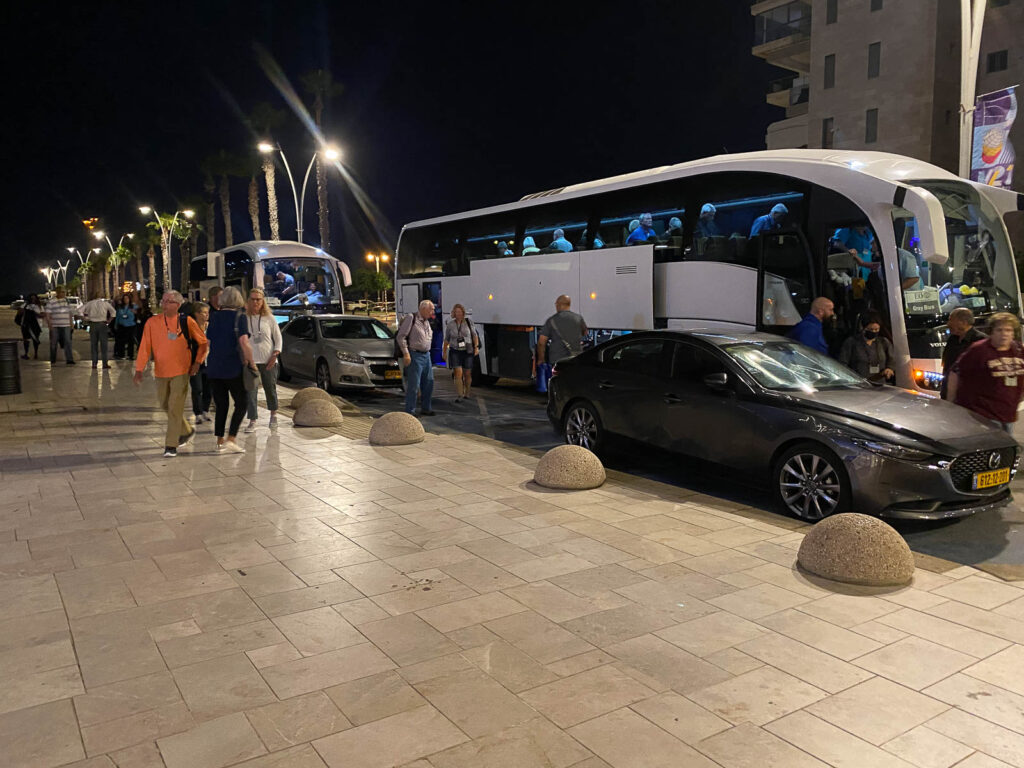The good news: both of our pre-planned activities fell through. We didn’t accomplish either. The result: much better outcomes in both cases.
We left our sumptuous accommodations at the Sheraton around 9:30 AM and, rather than going for the $35 breakfast the hotel offered, we went down on the beach and bought pastries and juice for less than half that price.
I’d googled something to do in Tel Aviv reasonably close to the hotel. Up popped the Holocaust Memorial Museum on Rabin Square, maybe a 20-minute walk from the hotel. “What?” said the bellman. “Never heard of it.” “What?” said the taxi driver. “You mean the one in Jerusalem, right?” The taxi took us to Rabin Square where we found the spot designated by google for the museum was a construction site for a new high-speed rail terminal.
We hatched plan B while sitting in the shade on park chairs – it’s really hot here – the Tel Aviv Art Museum, a 20-minute walk. We hoofed it there and eventually found the entrance. The art museum is part of a large arts complex with theaters and concert halls in addition to the art museum.
Inside we found a documentary on the photojournalist of Micha Bar-Am, said to be the father of photojournalism in Israel. His work was organized into nine videos, each lasting 8 minutes and including interviews with the artist and his wife/collaborator. We entered a large room with nine screens with benches in front of each. We watched four videos before moving on but later on came back and saw four more before being kicked out at 2 PM – today is Friday and sabbat starts at sundown, hence the early closing.
The work was fascinating on several levels. The photography, mostly black and white, was exceptional. Bar-Am was present to photograph many historical events and people in Israel’s history, such as the Yom Koper war and many prime ministers. And the photos gave a glimpse of what life in Israel was and is like, including scenes from kubutzes.
We also visited a collection of mostly contemporary Israeli art. The theme centered on earth, water, air and fire. As with most modern art it is difficult to connect all the dots, but the work was interesting, nonetheless. One interesting tidbit: Israeli artists seldom focus on the ocean, even though Israel is a coastal country with the Mediterranean at its front door. The reason suggested is that Israelis have always been focused on land and territory. Reclaiming the promised land as a Jewish state has been more important than naval matters.
We hailed a cab to take us to Yaska, a restaurant near the hotel that had been recommended by our bellman. I gave the cabbie the name of the restaurant and he said, in broken English, “No, you don’t want to go there. You must go to HaKosem. They have the best shawarma and falafel in the world. Google it if you don’t believe me.” After a falafel each and a lemonade-like drink it’s the best in the world. Google it if you don’t believe us.
From then on things were back on track. Jeanne and Chip arrived by 3 PM. We moved the van departure up to 3:30 instead of 4:30, and we were at the hotel here in Hadera before 5 PM. We procured a bottle of wine from the hotel kiosk and by 7 PM we were dipping our toes in the bathwater-like Mediterranean. Dinner by 7:30 with our fellow travelers John and Marilyn who are housed next door. The full group arrived about 9:30, tired and hungry but at least here.
Bags in the lobby tomorrow morning by 7 AM and on the bus by 8. We’re headed out to see Beit Shean, Caesarea, Mount Carmel and Tel Megiddo before reaching our next hotel in Tiberius. No time for lollygagging around in five-star hotels from here on out. We’re going to have to act like tourists, not like vacationers.
